Want to break into competitive search results but don’t have an authoritative website? Enter Parasite SEO.
In this guide, we’ll show you how to use this publishing strategy to take advantage of high-authority sites and break into profitable niches.
What is Parasite SEO?
Parasite SEO involves publishing a quality piece of content on an established, high-authority external site to rank on search engines. This gives you the benefit of the host’s high traffic, boosting your chances for leads and successful conversions. These high DR websites have a lot of authority and trust in the eyes of Google, like si.com or dallasnews.com.
This means parasite SEO will allow you to post an article to an external site, ride the coattails of that high authority website into search results, and build backlinks to promote an affiliate program.
Does Parasite SEO Work?
I think it’s a safe yes.
Let’s have a look at the SERP “best appetite suppressant” in my favorite search engine optimization tool, Ahrefs.
At the time this article was written, basically the entire SERP was filled with parasite SEO websites leveraging high-authority websites with high domain authority:
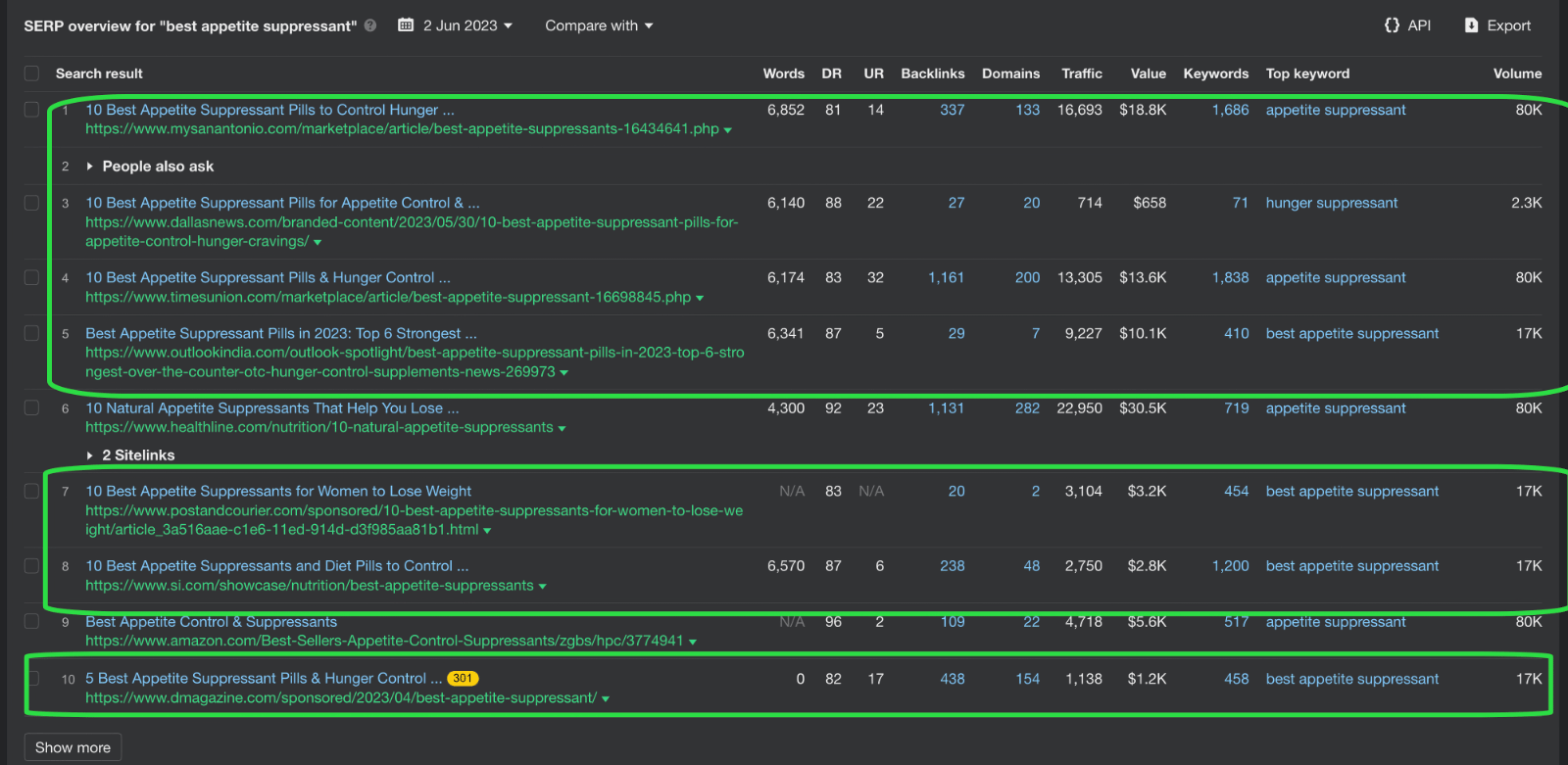
In fact, the only two websites that are not parasite SEO websites are Healthline and Amazon, two web properties that many SEOs perceive as hard to outrank. This means seven different SEOs (or one super smart SEO 🤔) outranked two different highly authoritative websites that are gradually taking over Google search results.
When Should You Use Parasite SEO?
Like most things in life, parasites are not for everyone.
🤣
To be serious for a moment, there are a few core parasite SEO concepts you have to be comfortable with before using parasite SEO as a strategy.
You need to be comfortable with building an asset primarily for cash flow generation instead of long-term value creation. Parasite SEO posts are not very attractive for website buyers because they don’t own them, and they can lose them at any time.
Bear in mind, the authority site you’re targeting may remove your post. Additionally, your competitors could publish similar or even better content, potentially outranking you in search results.
Parasite SEO posts can also be volatile. Marketers have been leveraging parasite SEO for years, and it will likely continue to be a part of SEO in the near future. That said, even parasite SEO posts are vulnerable to updates. Especially with competitive keywords, rankings often come fast and go fast.
Take this post:

It ranked fairly quickly, and we suspect there is still an ROI, but their rankings have taken a pretty hard drop.
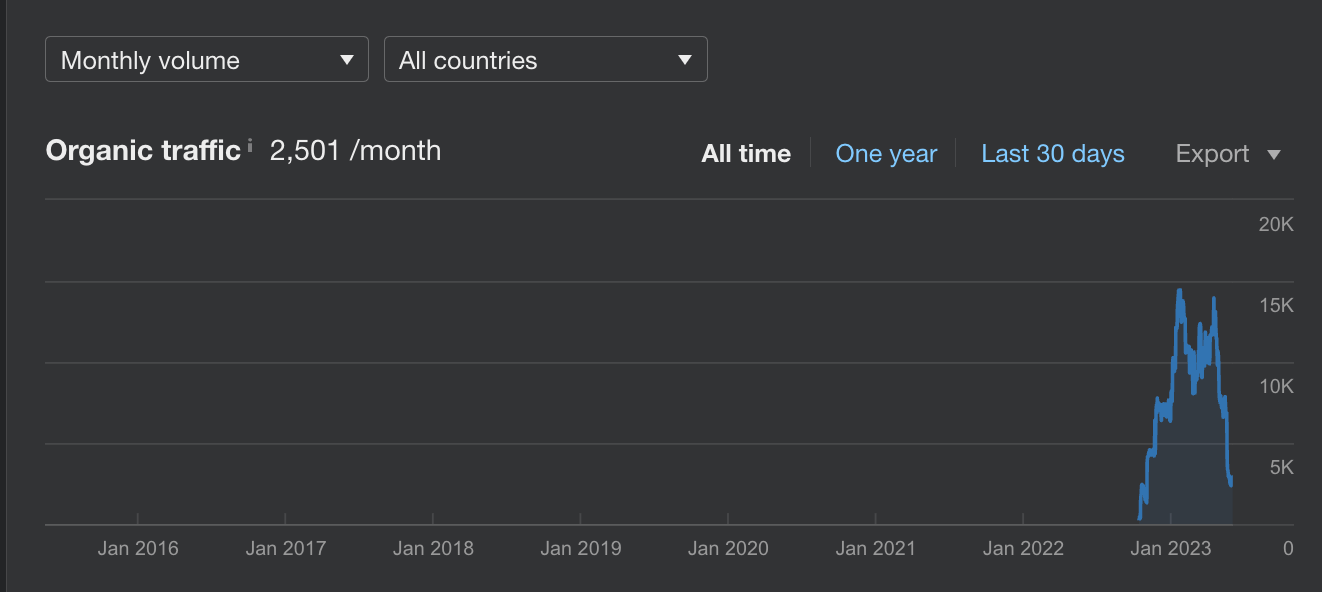
Since you are posting on a high DR website that you do not have absolute control over, a lot of elements are outside of your control.
For example, you might not have the ability to go back and edit the content, the website owners can reorganize their architecture, Google might decide the website no longer is as authoritative, the list can go on forever.
Given that it is not your website, numerous aspects are beyond your control.
How Do You Implement Parasite SEO?
At this point, you are probably wondering how you implement parasite SEO. While it is not rocket science, it requires some skill and know-how.
Find High Authority Publications Open To Parasite SEO
The first step is to find high authority websites that will allow you to publish parasite SEO articles on. You can do this by searching for the topic you want to rank for and studying the top-ranking pages.
Get familiar with the sites that accept external contributions, then pitch those that rank for related keywords to see if you can contribute to their content.
For example, if you are able to post on SI.com, you’ll be leveraging the strength and authority of a DR87 website.
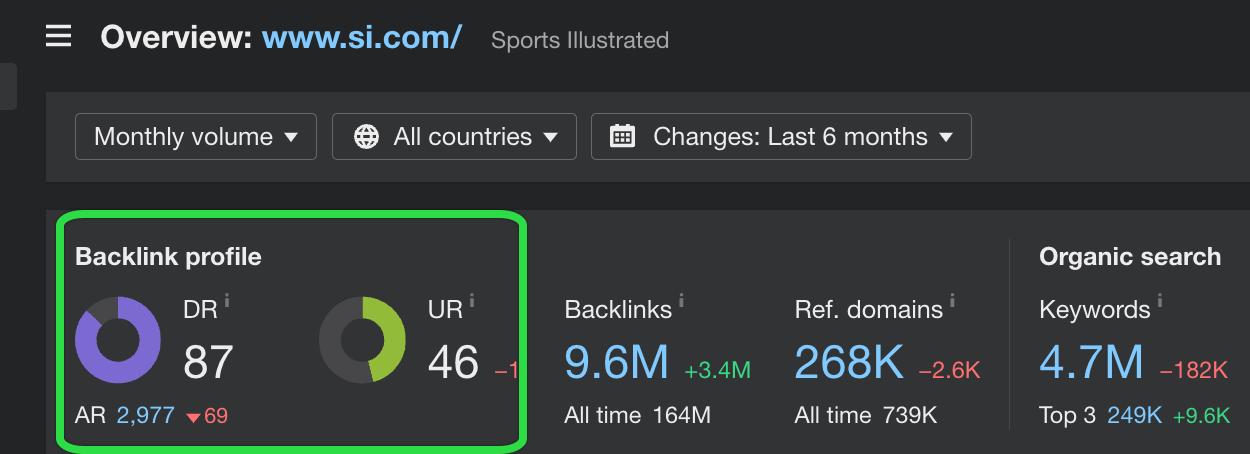
Pay For Sponsored Content (Or Guest Post)
While it’s possible to publish a parasite SEO “guest post,” it’s far more likely you’ll have to pay for ‘sponsored content.’ Paying for sponsored content isn’t necessarily a bad thing, and it’s very common in parasite SEO.
For instance, Si.com, a very high authority domain, allows for sponsored content, and lots of folks are leveraging this higher domain authority website for parasite SEO:

Since you’ll be investing quite a bit into this article, you’ll want to include your “calls to action” links to make affiliate sales. Chances are, the typical guest post or high authority sites won’t allow that, and you’ll have to shell out a few bucks with a sponsored post to make sure the CTAs are included.
In fact, if you look at the vast majority of ‘parasite’ articles, you’ll notice they are clearly labeled as sponsored content:
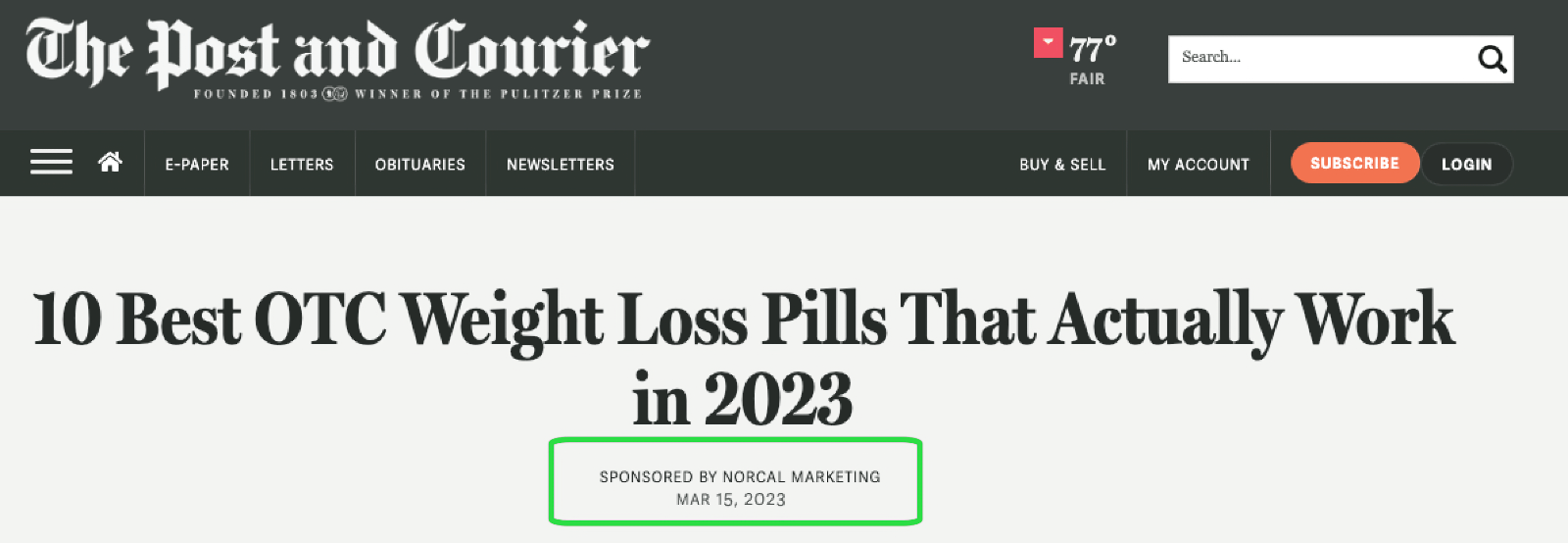
Apply Fundamentals of On-Page SEO
While this may seem obvious to seasoned SEOs, many SEOs are unaware that you’ll still have to invest time and energy in dialing in your on-page SEO.
The authority of the website alone likely will not help you rank.
You’ll still have to use tools like SurferSEO and Ahrefs to ensure your content is well structured, contains keywords, hits the required keyword densities, etc. Don’t assume your content will rank from authority alone—take the time to optimize it properly.
Link Build Your Content
Even though your parasite SEO post will be published on an authoritative site in an effort to boost your search engine rankings, you are playing with highly competitive keywords.
You are going to need to link build your parasite SEO content to be competitive and rank higher. If your competitors are high authority web pages and have backlinks, you’ll need backlinks too.
For example, this post has 46 unique referring domains:

Onto your next question: how do you build backlinks to these posts?
White Hat Parasite SEO
White-hat parasite SEO is largely what is described above. The main difference between this and other methods is how you build links to your page. With this mindset, you will be building legitimate backlinks to your site.
No spam, no link wheels — just high-quality guest posts and links pointing to your ‘parasite’ post.
You’ll build backlinks in a similar fashion for a long term authority website. You want it to stay around for a while and are in it for longer term gains.
Take this example: they built a number of guest post links from high DR websites that receive traffic:

Black Hat Parasite SEO
There are also a number of parasite SEOs that implement black-hat SEO techniques to rank these pages.
The content setup is often largely the same. You are posting on major publications, so you’ll have to put some effort into it, and it’s unlikely you will get away with posting ‘meh’ articles. Only high quality content will do.
The difference is in the link building style of your parasite pages.
Let’s take the keyword ‘best cbd gummies’ as an example; there are several parasite SEO pages in this search result:

It is highly suspected that a few of these pages have 150+ backlinks, and it’s doubtful they reached out and promoted the article to legitimate publications:

One sign of leveraging low-quality link-building tactics is that nearly 35k of their backlinks are nofollow:

Additionally, these pages also have quite a few Russian language links in the comments of websites:

These factors indicate the use of link-building tools in some capacity. The effectiveness of parasite SEO relies on the high DR of authoritative websites, which allows them to handle numerous spammy backlinks without severe consequences. These are the types of backlinks you would typically avoid for long term web assets.
This approach is based on the idea that Google is less likely to penalize pages on high DR websites with well-established brand credibility.
Think of it like drinking and driving; even though you had a few drinks, the policeman is waving you along because you are coming from a place of authority.
Examples of Parasite SEO
There are quite different scenarios, but here is what you can generally expect:
- Sites that rank quickly.
- Websites that are consistently maintained over extended durations, similar to genuine websites.
- SEOs that employ either white-hat or black-hat techniques.
Let’s look at a few of these different scenarios.
Competitive SERP Example Ranking for 1+ years
Here is an example of a sponsored post ranking for more than one year and targeting the term “tax relief services.”
Example:

As you can see, they are targeting a fairly competitive keyword in the finance niche:
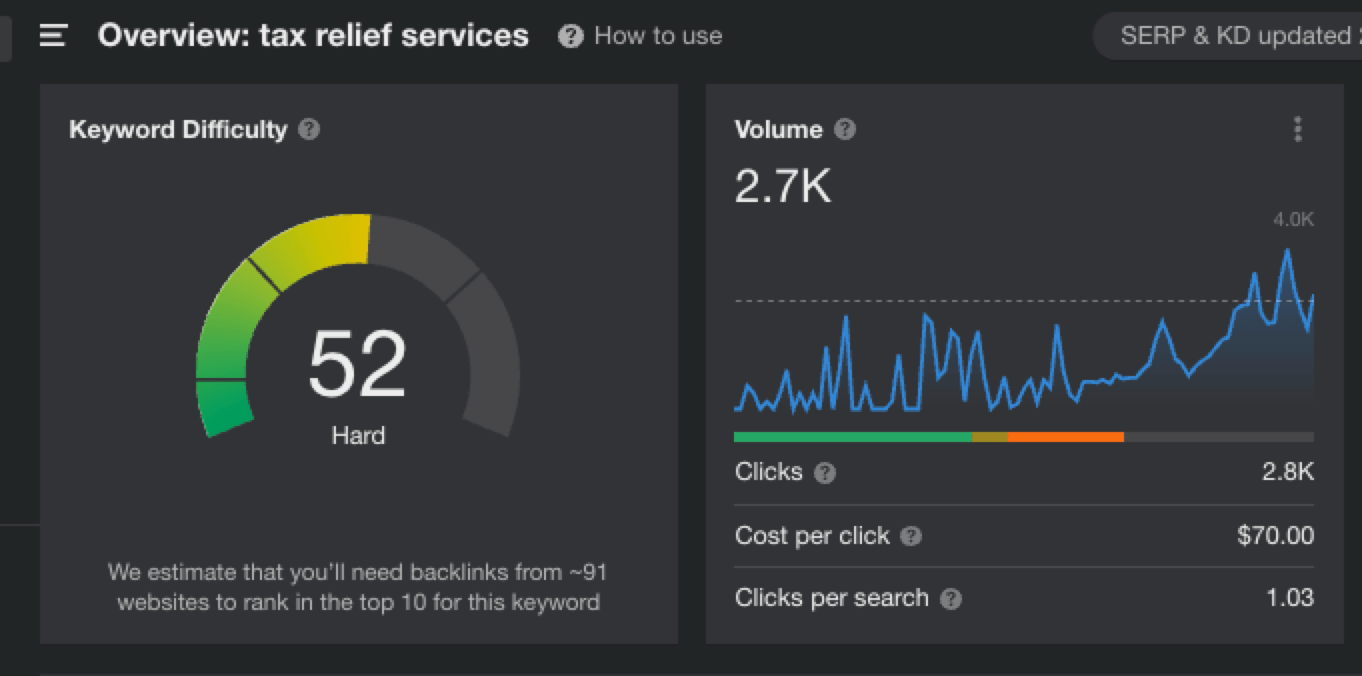
At the time we are writing this article, they are ranking #1 and even managed to grab the featured snippet:
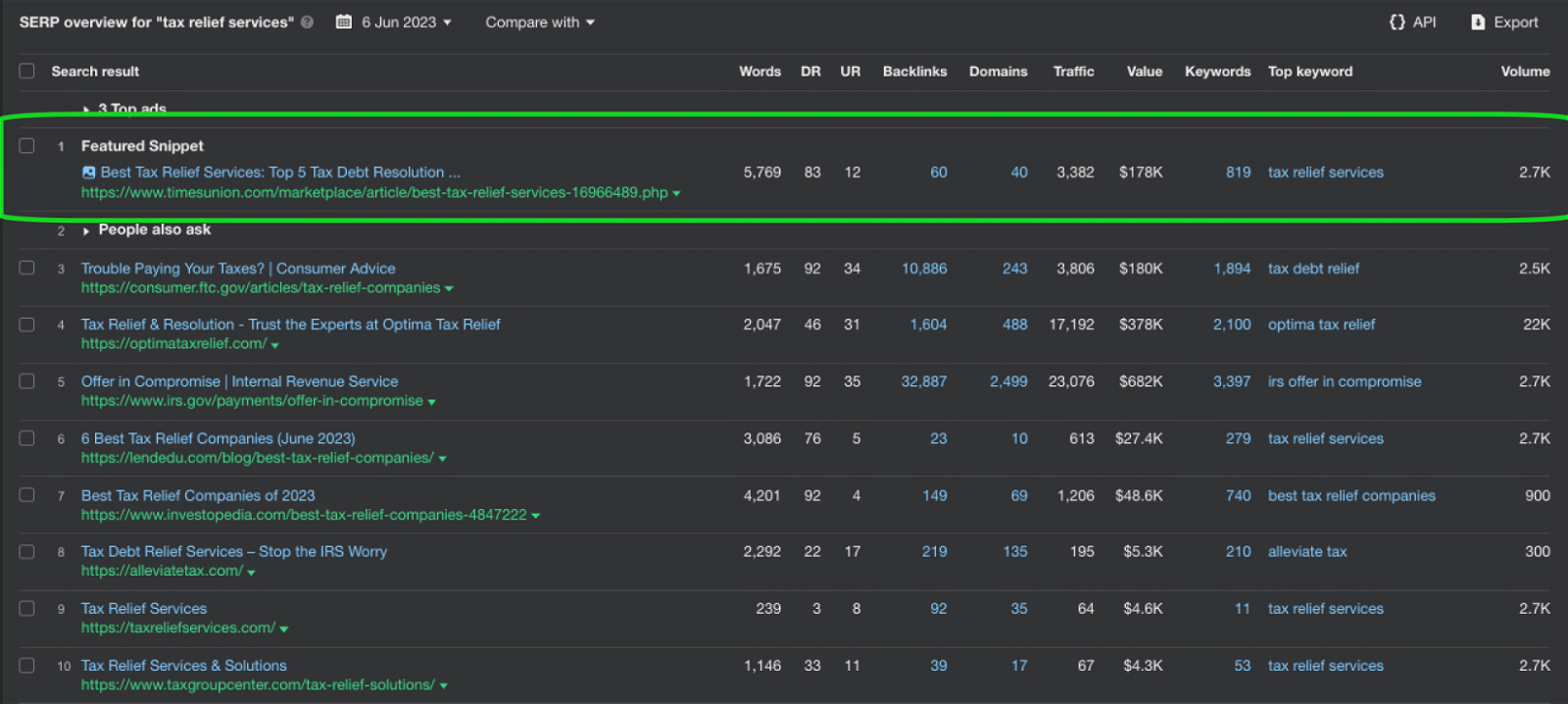
Considering how competitive the keyword is, it took off in a fairly short period of time. Not overnight, but no one can argue that it has a nice growth curve:
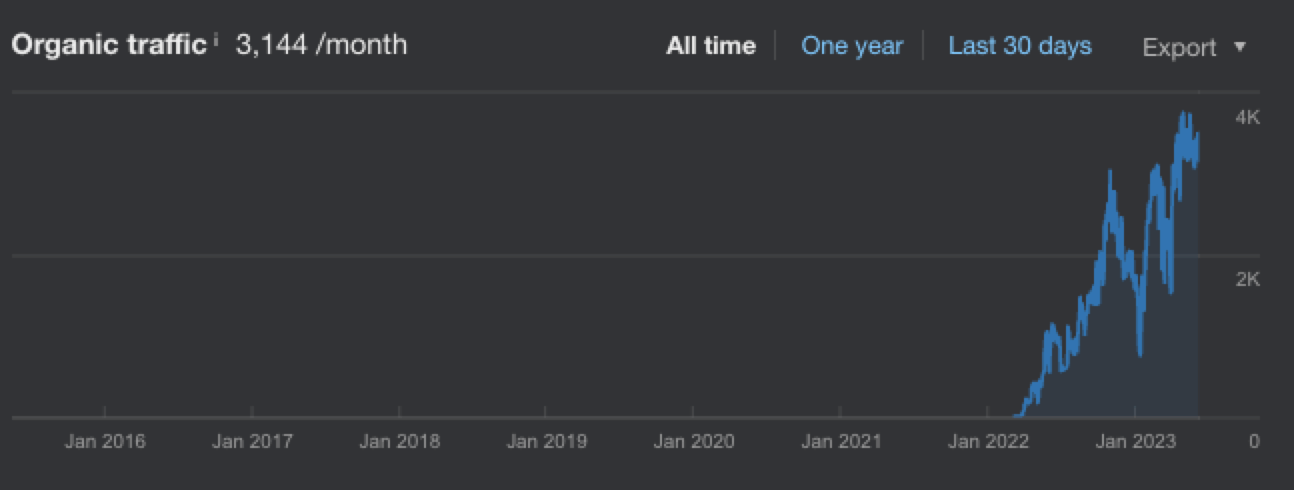
What makes this post very interesting is that it is clearly maintained over a long period of time.
If we look at the way back machine, we can track that it has been regularly updated since 2022.
Here is a Wayback Machine snapshot in 2022:

2023:

Content Can Rank Really Fast
Article Example:

They are targeting the keyword ‘weight loss pills’ with KD82 and 107k searches per month. Ranking #4 at the time we wrote this article.
Because they properly leveraged the authority of this website, it shot up like a rocket:
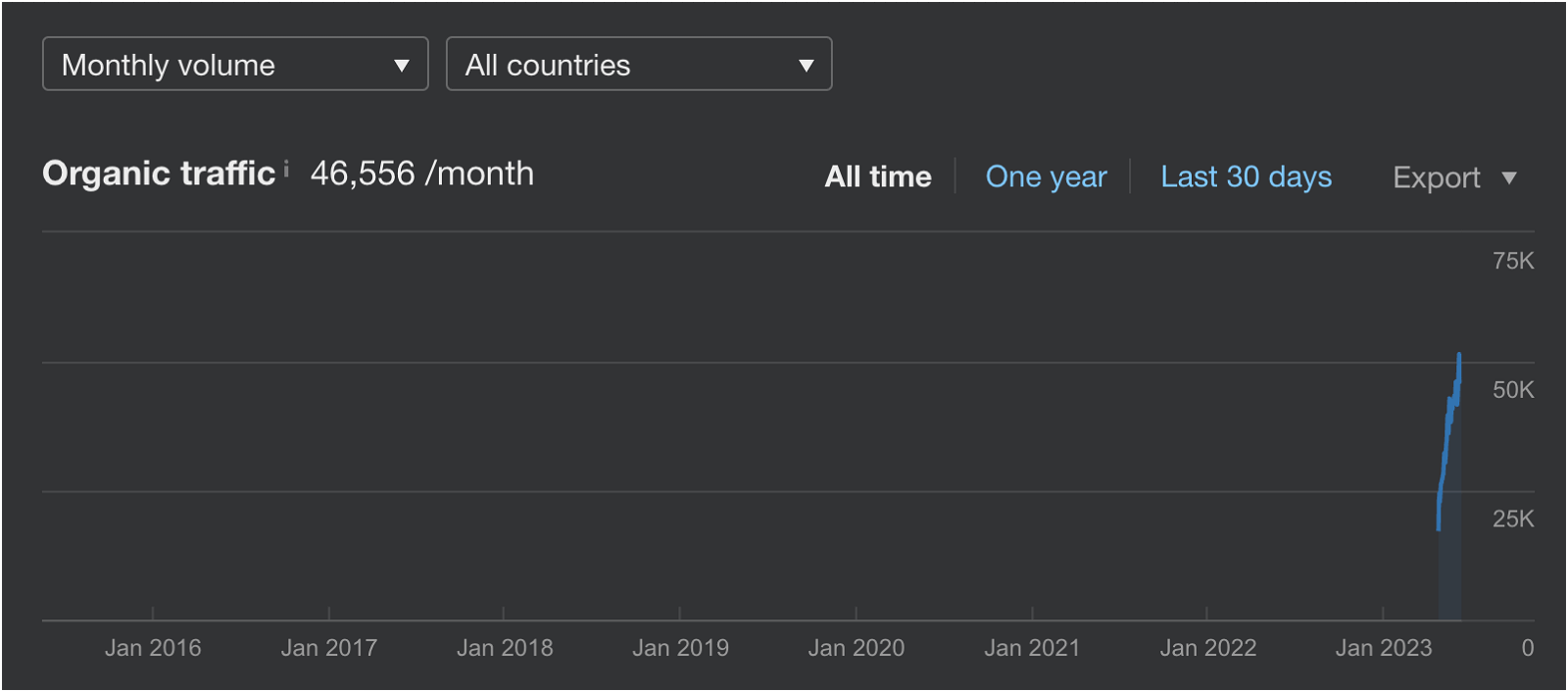
According archive.org, it was just published in the article was published very recently:
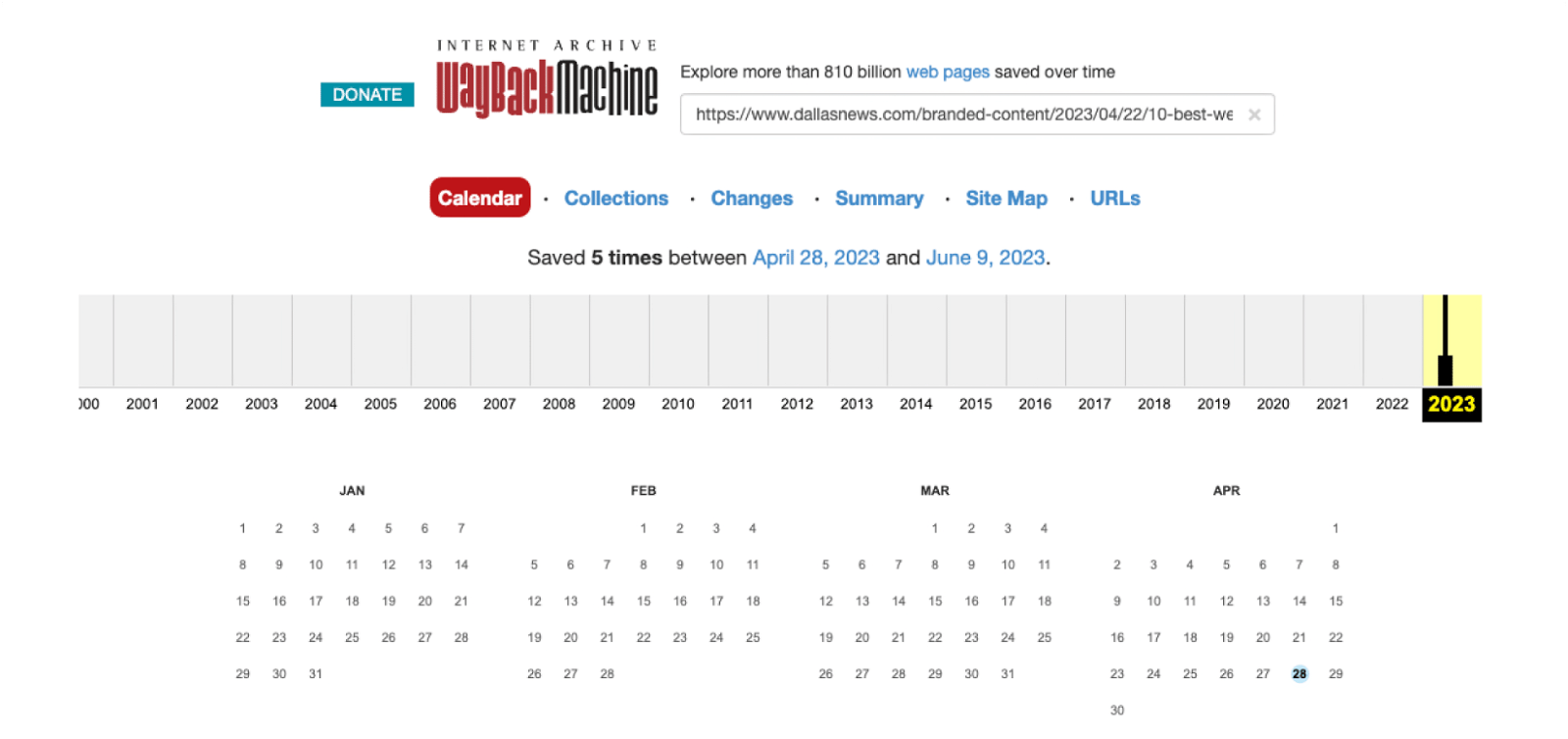
What makes it even more interesting is that they are competing with a number of other parasite seo websites, despite this they rank #1:

FAQs/Roadblocks
Don’t assume parasite SEO is like printing money, there are a number of considerations and roadblocks to overcome.
How To Avoid Keyword Competition On The Same Website?
In any competitive field, there are going to be multiple advertisers going after the same keyword. Take this SERP for example. Every few months a different article on the same website has a different article ranking:
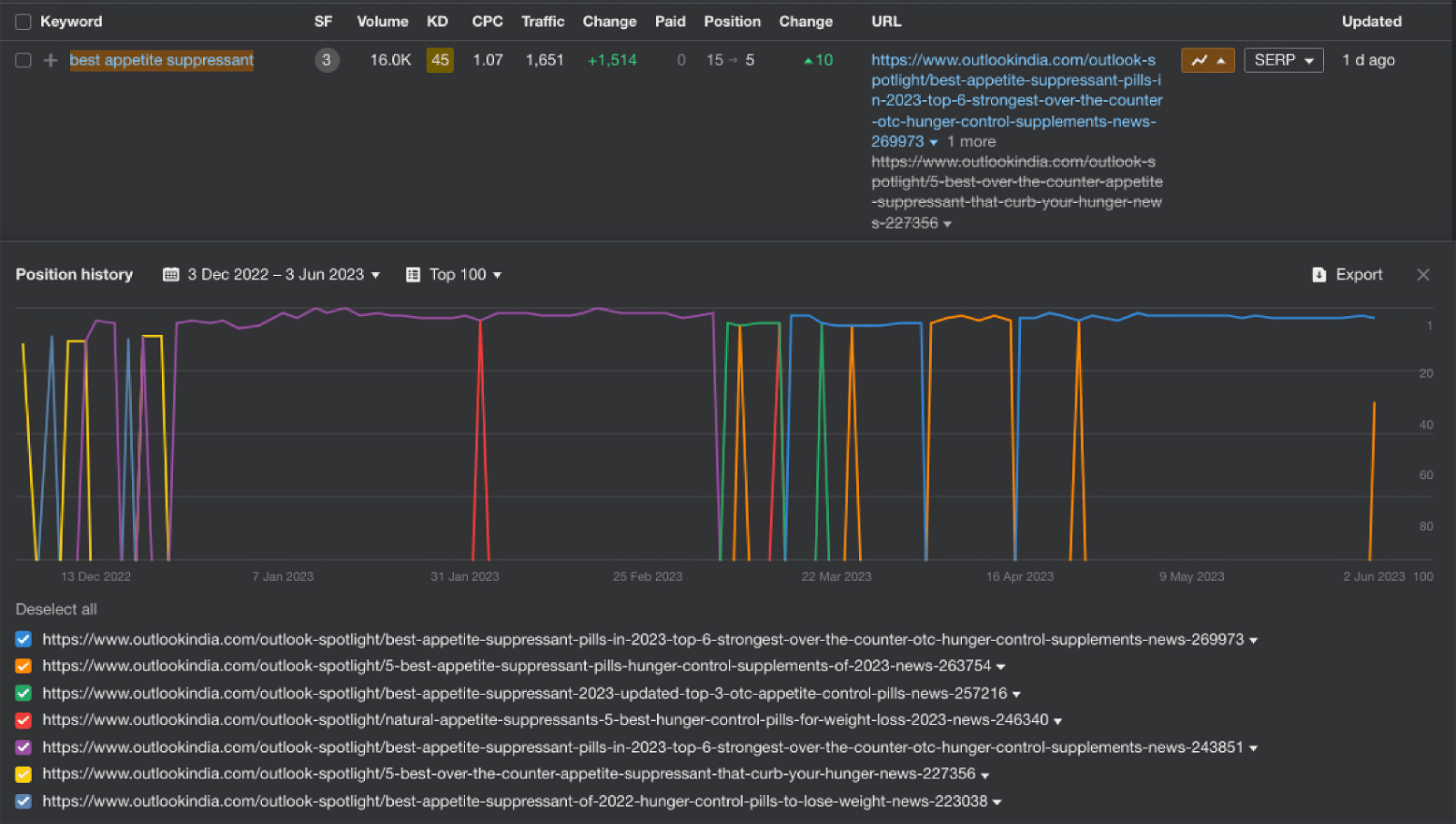
If you want to rank for a specific keyword on a website that hosts multiple articles from different advertisers, you may want to negotiate an exclusive contract with the webmaster. This way, you can ensure that your article is the only one that targets that keyword on that website.
Here is an example of how we negotiated an exclusive contract for a keyword in the past:

How Much Maintenance is Needed For Parasite SEO?
The level of maintenance required for your published articles hinges on your parasite SEO strategy. For example, you can adopt a black hat SEO approach known as ‘burn and churn.’
This approach doesn’t require worrying about article rankings. Instead, you continually create and post three similar articles to replace the original one in search results.
If you are focused on a mid-long term strategy, similar to any high earning page, you’ll have to regularly update the post.
Take this example from earlier in our article, they have clearly maintained it since 2022.

How Much Does Parasite SEO Cost?
The cost of parasite SEO will depend on your strategy and budget. The better the publication you post on, the more expensive it will be; higher authority publications will likely charge more for a sponsored post.
In addition, the more competitive the keyword, the more backlinks you will likely need. More backlinks will result in more outreach costs.
That said, here is the general cost based on our research:
| Item | Cost Range | Notes |
|---|---|---|
| Publication Cost | $600-$2,000+ | Depends on the quality and authority of the publication. |
| Backlinks | $50-$450 for each. | Depends on your backlink provider or if you do outreach yourself. |
| Writer | $100-$500+ | Depends on how long the article is and the expertise of your writer. |
To determine how many backlinks you will need, you will have to conduct some research and make an educated estimate. Identify a website in the SERP you’re targeting with an approach most similar to yours and see how many unique domains are pointing to their website.
For example, if I found websites to post on that a similar caliber to the ones ranking, I can estimate I need 20-40 backlinks to rank in this SERP:
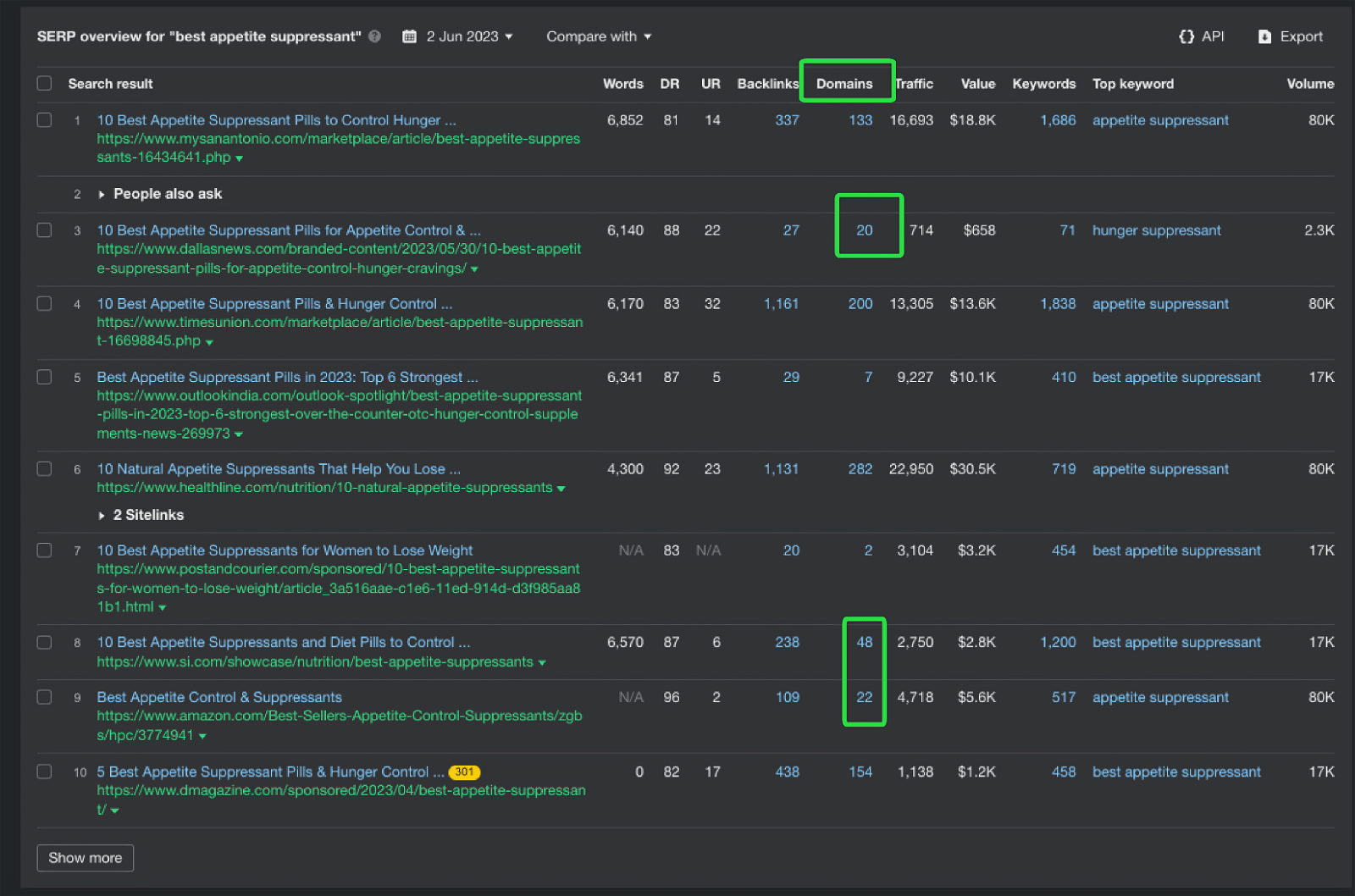
How To Ensure High-Authority Sites Don’t Kill Your CTAs
One of the biggest roadblocks with this approach is making sure your affiliate links contain calls to action. After all, you are putting a lot of effort into someone else’s publication, so you want to make sure you get a solid ROI.
In short, if other people are doing it, most likely, so can you.
Look at the site you want to post on, make sure other people are sponsoring similar content. When you are negotiating with the publication, use one of those posts as an example and make it clear to the publisher how you’d like to format the content.
Read their Guidelines
Another tip is to read the guidelines in their terms of service. They should make it clear if you can include marketing materials or not.
Here is an example:

Conclusion
Parasite SEO is not for everyone, and you must decide if you’re comfortable with the potential volatility of this type of SEO, given that your asset would be on someone else’s website.
You also need to make a choice between a white-hat or black-hat approach.
Regardless of your decision, the key is to find the right balance between leveraging high authority websites and maintaining a sustainable SEO approach.
As always, stay adaptable and keep an eye on the ever-evolving SEO landscape.







